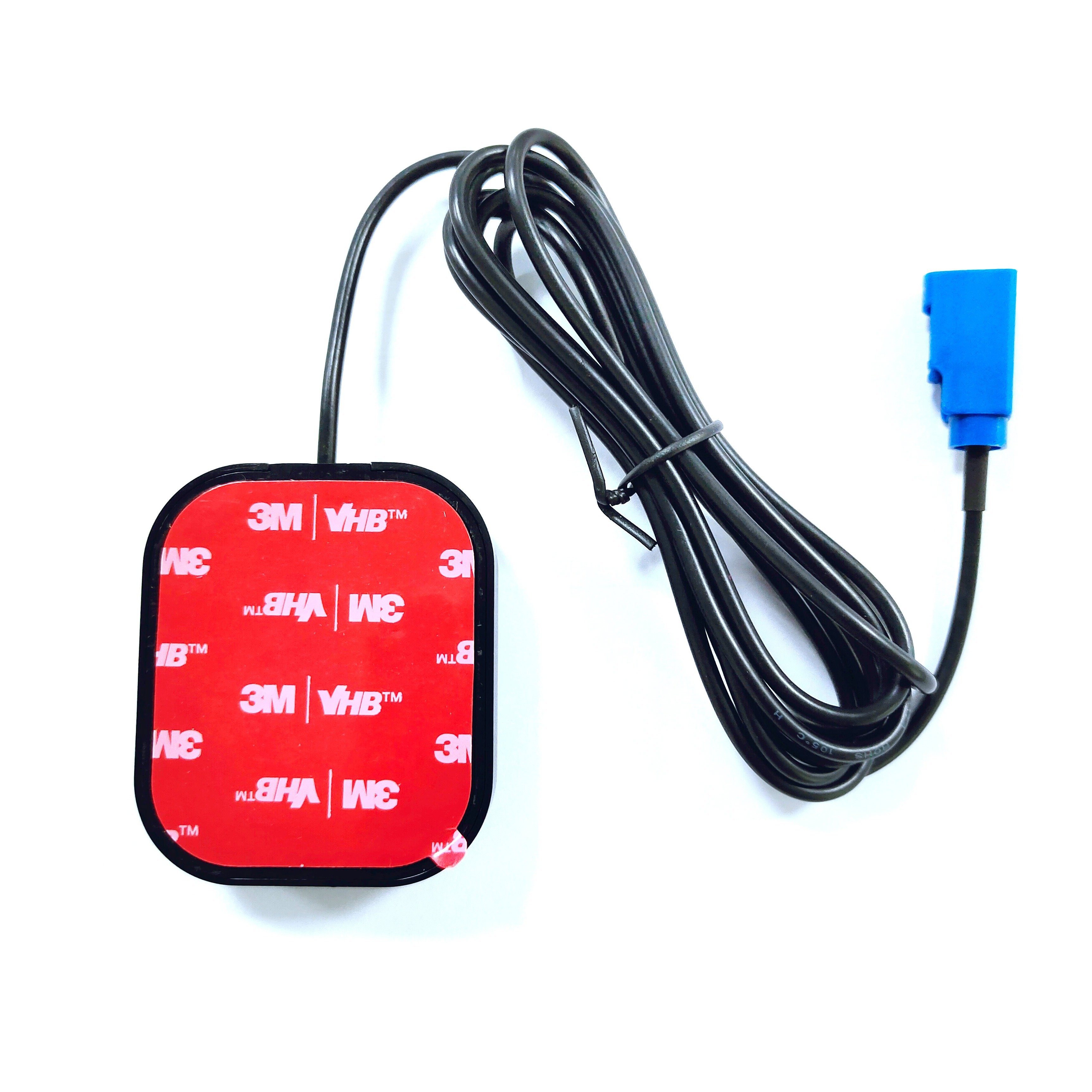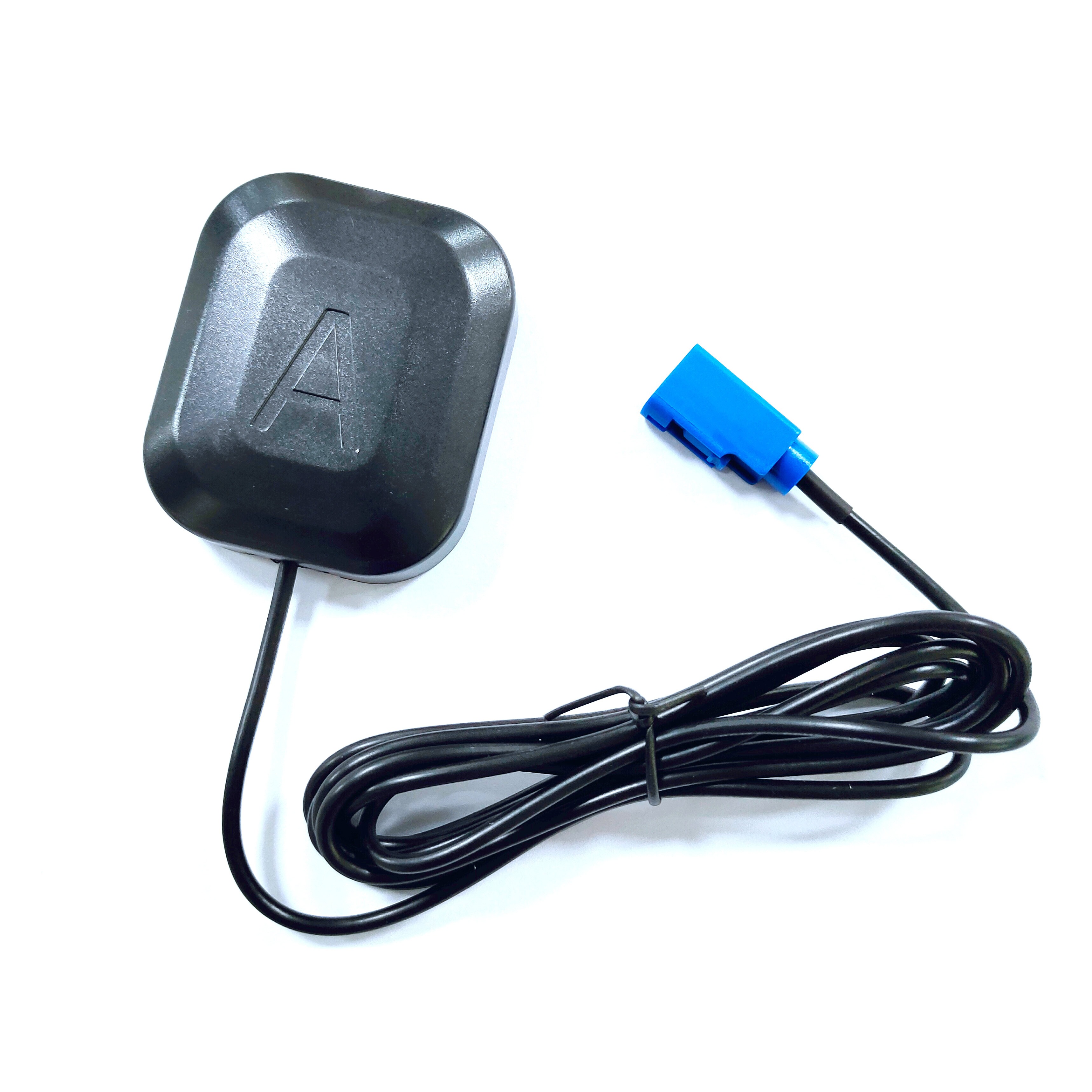The magnetic-mount GNSS RTK antenna is a critical enabler, transforming standard vehicles into mobile high-precision platforms. Its applications span traditional industries and cutting-edge research, and its evolution is tightly coupled with several key technological trends.
Current Applications:
Precision Agriculture: This is a massive market. Antennas mounted on tractors, combines, and sprayers enable auto-steer systems, allowing vehicles to drive with sub-inch repeatability. This eliminates overlaps and gaps in planting, fertilizing, and spraying, leading to massive savings in seed, chemicals, and fuel, while increasing yields. They are also used for yield mapping and variable rate application.
Construction and Machine Control: Bulldozers, motor graders, and excavators use these antennas for grade control. The antenna provides the precise location of the machine, which is compared to a 3D digital design model (digital terrain model). The system then automatically guides the operator or directly controls the machine's blade or bucket to cut and fill to the exact design specifications, drastically reducing survey stakes, rework, and time.
Mobile Mapping and GIS: Vehicles equipped with laser scanners (LiDAR), cameras, and other sensors use magnetic-mount RTK antennas to provide a precise georeference for every collected data point. This is essential for creating highly accurate 3D maps of roads, utilities, infrastructure, and environments for GIS (Geographic Information Systems).
Surveying and Mapping: Surveyors use them for rapid, high-precision topographic surveys, asset mapping, and construction stakeout when using a vehicle as a rover. It allows them to collect thousands of precise points quickly without leaving the vehicle (e.g., for road profiling).
Autonomous Vehicle and ADAS Development: The automotive industry relies heavily on RTK GNSS as a ground truth source for testing and validating autonomous driving systems and ADAS features like lane-keeping and adaptive cruise control. The magnetic mount allows for easy installation on test vehicles of all types.
Emerging and Niche Applications: This includes precision for snowplows, public transit management, law enforcement (accident scene mapping), and scientific research like atmospheric monitoring.
Future Trends:
Tighter Integration with Inertial Navigation Systems (INS): The future is not just GNSS. The trend is towards deeply coupled GNSS/INS systems. An Inertial Measurement Unit (IMU), containing gyroscopes and accelerometers, is often integrated directly with the antenna or receiver. The INS provides continuous, high-frequency position, velocity, and attitude (tilt, pitch, roll) data between GNSS updates and during short GNSS outages (e.g., under bridges, in tunnels). The magnetic-mount antenna provides the absolute position updates that correct the inherent drift of the INS. This is crucial for full autonomy.
Multi-Antenna Systems for Attitude Determination: Using two or more magnetic-mount antennas on a single vehicle allows the system to calculate not just position, but also precise heading (yaw), pitch, and roll. This is far more accurate and reliable than using an IMU alone for attitude and is becoming standard for machine control and autonomous applications.
The Rise of PPP-RTK: While traditional RTK requires a local base station, a new technique called Precise Point Positioning (PPP) uses corrections from a global or regional network of reference stations for decimeter-to-centimeter accuracy without a local base. PPP-RTK is a hybrid that converges to centimeter accuracy much faster than PPP by also transmitting information about the phase ambiguities. Magnetic-mount antennas will be key rovers in these new correction networks, benefiting from their ease of use over vast geographic areas.
Support for All Constellations and Frequencies: Future antennas will be "everything ready," designed to receive every current and planned signal from GPS, GLONASS, Galileo, BeiDou, and regional systems like QZSS (Japan) and NAVIC (India). This maximizes satellite availability, which is critical for reliability in urban canyons and under dense foliage.
Miniaturization and Aesthetics: While performance is paramount, antennas will continue to become lower profile and more aesthetically integrated, looking less like scientific instruments and more like sleek consumer automotive accessories.
Enhanced Security and Connectivity: We may see integrated cellular modems or secure radio links within the antenna housing itself, simplifying cabling and creating a more streamlined "correction-ready" device. Theft prevention may move beyond physical leashes to smart tags or integrated tracking devices.
The magnetic-mount RTK antenna will remain a vital sensor at the intersection of the physical and digital worlds, serving as the fundamental source of truth for the precise location of the mobile platforms that are increasingly automating our world.
Conclusion
The magnetic-mount GNSS RTK car antenna is a paradigm of elegant engineering solving a critical practical problem. It stands as a testament to the principle that the most powerful technologies are often those that provide seamless access to complexity, hiding immense sophistication behind a facade of simplicity. By distilling the chaos of RF signals from a multitude of satellites orbiting 20,000 kilometers away into a clean, stable, and precise data stream, it performs a minor miracle of modern physics every second.
Its significance lies in its role as an enabler. It is the bridge that allows the theoretical power of RTK—a technique known for decades—to be applied fluidly and dynamically in the real world. It has democratized centimeter-accurate positioning, moving it from the exclusive domain of surveyors with permanently mounted equipment on tripods and dedicated vehicles to a tool that can be used by agronomists, construction foremen, mapping technicians, and software engineers with equal ease. This portability and flexibility have been instrumental in driving the adoption of high-precision GNSS across a breathtakingly diverse range of industries, fueling efficiencies, enabling automation, and reducing environmental impacts.
However, as we have explored, this convenience is not without its caveats. The antenna is not a magic bullet. Its performance is contingent upon rigorous attention to detail: the careful measurement of its placement to avoid lever arm errors, the mindful management of its cable and security, and the understanding of its limitations in challenging RF environments. It demands a user who respects both its power and its constraints.
Looking forward, its role is only set to become more deeply embedded in the technological fabric of our society. As autonomous systems transition from research labs to public roads and worksites, the demand for robust, reliable, and absolutely precise positioning will explode. The magnetic-mount antenna, particularly when fused with inertial and other sensory data, will form the unshakeable foundation upon which these systems build their understanding of the world. It will evolve to support new signals, new correction techniques like PPP-RTK, and new form factors, but its core mission will remain unchanged: to be the stable, trustworthy, and convenient eye in the sky for anything that moves on the ground.
In conclusion, the magnetic-mount GNSS RTK antenna is far more than a simple accessory. It is a critical linchpin in the ecosystem of precision technology. It masterfully balances the competing demands of ultimate performance and ultimate convenience, making it one of the most impactful and indispensable tools in the ongoing quest to measure, map, and navigate our world with ever-greater accuracy.




































































 Language
Language
 En
En Cn
Cn Korean
Korean

 Home >
Home > 






 18665803017 (Macro)
18665803017 (Macro)













